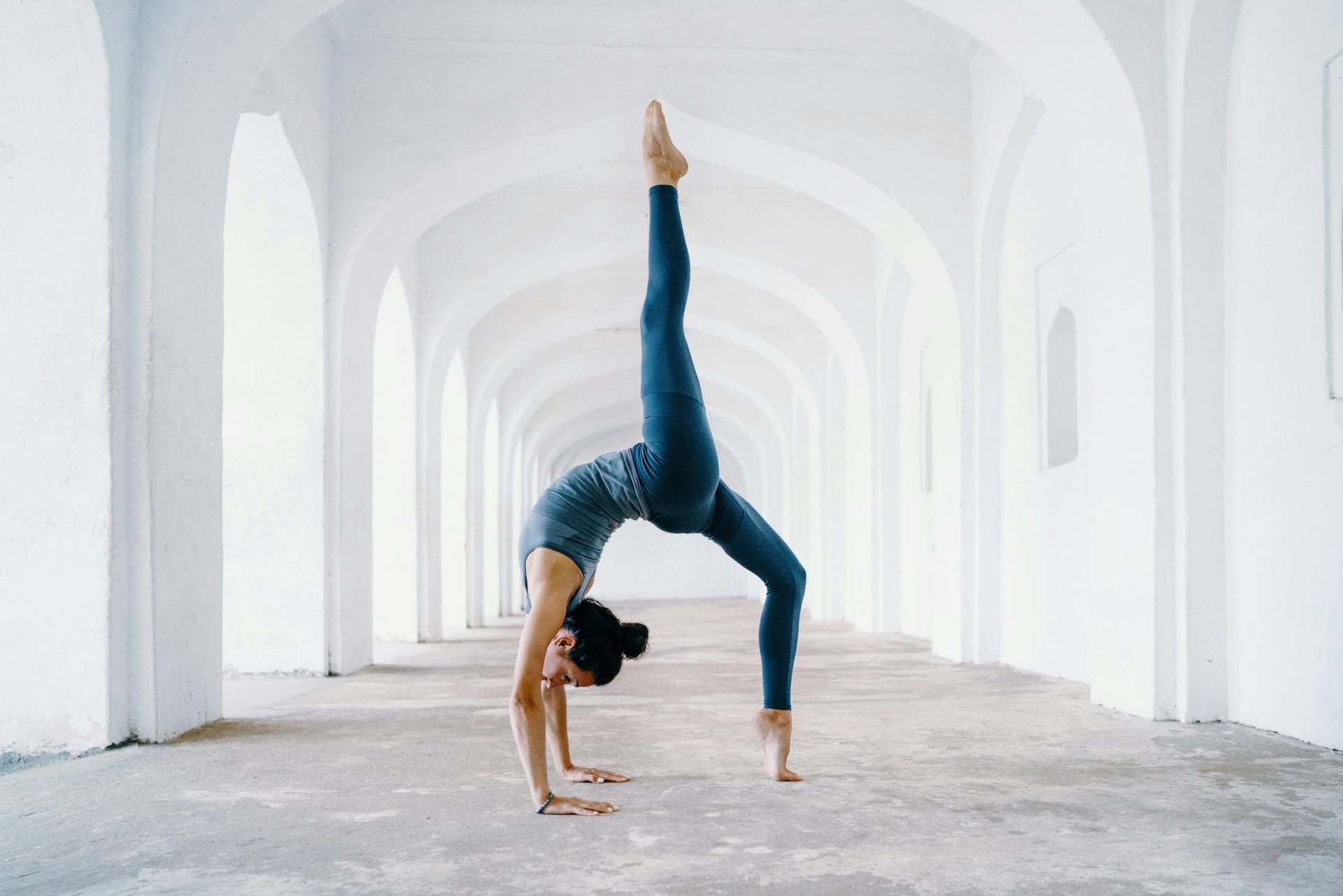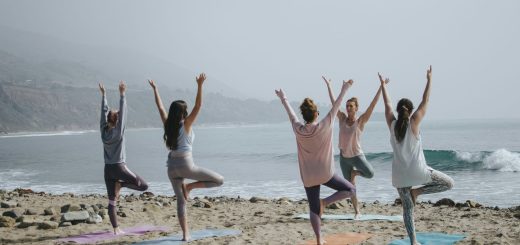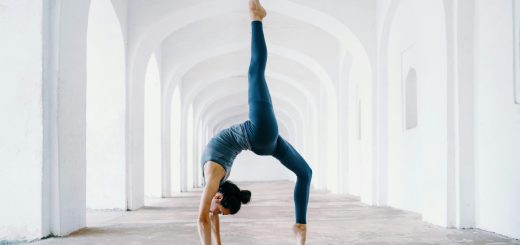Dynamic Flow: Vinyasa Yoga Essentials Guide

Hey there, amazing readers! 🖐️ Just a quick note: yes, we know there are a lot of ads here. Trust us, we get it—it’s not the prettiest look, but they help us keep this blog alive and kicking. Those pesky little ads cover the costs of all the behind-the-scenes magic, from hosting and tech stuff to creating content we hope you’ll love.
We’re committed to delivering quality posts, and your support (even just sticking around despite the ads) means everything to us. So, bear with us, and thanks for helping us keep the good vibes rolling. Now, on to the fun stuff! 😉
TRANSLATE BUTTON AT THE END OF THE ARTICLE
A Quick Overview
Dynamic Flow, also known as Vinyasa Yoga, is a popular style of yoga that focuses on linking breath with movement in a continuous flow.
It is a dynamic and energetic practice that helps to build strength, flexibility, and mindfulness.
Vinyasa Yoga is suitable for all levels, from beginners to advanced practitioners, as it can be modified to suit individual needs and abilities.
In this guide, we will explore the essentials of Dynamic Flow: Vinyasa Yoga, including its benefits, basics, sequencing, breathing techniques, common poses, tips for success, modifications, meditation integration, class selection, equipment, and how to continue your practice.
Introduction to Dynamic Flow: Vinyasa Yoga
Vinyasa Yoga is a style of yoga that emphasizes the connection between breath and movement.
The word "Vinyasa" translates to "to place in a special way" and refers to the sequential order of poses in the practice.
In a Vinyasa class, students flow through a series of poses, moving with the breath to create a continuous, dynamic sequence.
This style of yoga is often fast-paced and offers a challenging workout for both the body and mind.
Vinyasa Yoga is known for its creative sequencing and the smooth transitions between poses.
Benefits of Practicing Vinyasa Yoga
There are numerous benefits to practicing Vinyasa Yoga.
Some of the key advantages include:
Improved Strength and Flexibility: The flowing nature of Vinyasa Yoga helps to build strength and flexibility throughout the entire body.
Cardiovascular Health: The continuous movement and breath work in Vinyasa Yoga can elevate the heart rate, providing a cardiovascular workout.
Stress Reduction: The focus on breath and movement in Vinyasa Yoga can help to calm the mind and reduce stress and anxiety.
Mindfulness and Presence: Practicing Vinyasa Yoga encourages mindfulness and being present in the moment, promoting mental clarity and focus.
Weight Management: Vinyasa Yoga can aid in weight management by burning calories and increasing metabolism.
Understanding the Basics of Dynamic Flow
In Vinyasa Yoga, there are some key principles to keep in mind:
Breath: The breath is the foundation of Vinyasa Yoga.
Each movement is linked to either an inhale or an exhale, creating a seamless flow.
Alignment: Proper alignment is essential to prevent injuries and get the most benefit from each pose.
Core Engagement: Engaging the core muscles helps to stabilize the body and support the spine in various poses.
Smooth Transitions: Smooth transitions between poses help to maintain the flow of the practice and keep the energy moving.
Sequencing and Transitions in Vinyasa Yoga
Vinyasa Yoga classes typically follow a specific sequence to ensure a balanced practice.
The sequence may include a warm-up, sun salutations, standing poses, balancing poses, seated poses, backbends, inversions, and a cool-down.
Transitions between poses are important in Vinyasa Yoga, as they help to maintain the flow and rhythm of the practice.
Teachers often cue students on how to move from one pose to the next with grace and ease.
Breathing Techniques in Dynamic Flow
Breath is a central focus in Vinyasa Yoga.
The primary breathing technique used in Vinyasa Yoga is Ujjayi breath, also known as "ocean breath." This breathing technique involves breathing in and out through the nose while constricting the back of the throat to create a gentle, audible sound.
Ujjayi breath helps to regulate the flow of energy in the body, deepen the breath, and maintain focus throughout the practice.
In Vinyasa Yoga, the breath is coordinated with movement, with each inhale and exhale guiding the transitions between poses.
Common Poses in Vinyasa Yoga
Some common poses you may encounter in a Vinyasa Yoga class include:
Downward-Facing Dog (Adho Mukha Svanasana)
Warrior Poses (Virabhadrasana I, II, III)
Plank Pose (Phalakasana)
Tree Pose (Vrksasana)
Cobra Pose (Bhujangasana)
Child’s Pose (Balasana)
Triangle Pose (Trikonasana)
Pigeon Pose (Eka Pada Rajakapotasana)
Bridge Pose (Setu Bandhasana)
Corpse Pose (Savasana)
Tips for a Successful Vinyasa Practice
To make the most of your Vinyasa Yoga practice, consider the following tips:
Listen to Your Body: Pay attention to how your body feels in each pose and modify as needed.
Stay Present: Focus on the breath and the present moment to stay grounded in your practice.
Hydrate: Drink plenty of water before and after your practice to stay hydrated.
Set an Intention: Consider setting an intention for your practice to help guide your focus and energy.
Modifying Poses for Different Levels
Vinyasa Yoga can be modified to suit practitioners of all levels.
Beginners may need to take things slower and focus on building strength and flexibility, while advanced practitioners can explore more challenging variations of poses.
Teachers can provide modifications and props to help students find the right level of challenge for their practice.
It’s important to listen to your body and honor where you are in your practice without pushing yourself too far.
Incorporating Meditation into Vinyasa
Meditation is often integrated into Vinyasa Yoga classes to promote mindfulness and inner peace.
A short meditation or mindfulness practice at the beginning or end of a Vinyasa class can help to center the mind and create a sense of calmness.
Practicing meditation alongside Vinyasa Yoga can enhance the overall experience and deepen the mind-body connection.
Teachers may guide students through a meditation practice or provide time for silent reflection during the class.
Choosing the Right Vinyasa Class
When selecting a Vinyasa Yoga class, consider the following factors:
Experience Level: Choose a class that aligns with your experience level, whether you’re a beginner, intermediate, or advanced practitioner.
Teacher Style: Different teachers have varying styles and approaches to Vinyasa Yoga, so find one that resonates with you.
Class Time: Select a class that fits into your schedule and allows you to commit to a regular practice.
Studio Atmosphere: Consider the ambiance and atmosphere of the studio where the class is held to ensure it’s a comfortable environment for your practice.
Equipment and Attire for Vinyasa Yoga
For a Vinyasa Yoga practice, you may need the following equipment:
Yoga Mat: A non-slip, cushioned yoga mat is essential for practicing on a stable surface.
Yoga Blocks: Blocks can be used to support and modify poses, especially for beginners or those with limited flexibility.
Yoga Strap: Straps can help with stretching and deepening poses, particularly for poses that require reaching or binding.
Comfortable Clothing: Wear breathable, flexible clothing that allows for ease of movement and comfort during practice.
Continuing Your Vinyasa Yoga Journey
To continue your Vinyasa Yoga journey, consider the following steps:
Practice Regularly: Consistency is key to progress in Vinyasa Yoga, so aim to practice regularly to build strength and flexibility.
Explore Workshops and Retreats: Attend workshops and retreats to deepen your understanding of Vinyasa Yoga and connect with like-minded practitioners.
Set Goals: Establish goals for your practice, whether it’s mastering a challenging pose or achieving a sense of inner peace.
Stay Open-Minded: Approach your practice with an open mind and willingness to learn and grow on your yoga journey.
Conclusion
Dynamic Flow: Vinyasa Yoga offers a dynamic and invigorating practice that combines breath with movement to create a seamless flow of poses.
By understanding the basics of Vinyasa Yoga, including sequencing, transitions, breathing techniques, and common poses, practitioners can build strength, flexibility, and mindfulness.
With the right tips, modifications, and meditation integration, individuals can enhance their Vinyasa Yoga practice and continue their journey of self-discovery and growth.
By choosing the right class, equipment, and attire, and committing to a regular practice, students can experience the numerous benefits of Vinyasa Yoga and cultivate a deeper connection to mind, body, and spirit.

The Enlightenment Journey is a remarkable collection of writings authored by a distinguished group of experts in the fields of spirituality, new age, and esoteric knowledge.
This anthology features a diverse assembly of well-experienced authors who bring their profound insights and credible perspectives to the forefront.
Each contributor possesses a wealth of knowledge and wisdom, making them authorities in their respective domains.
Together, they offer readers a transformative journey into the realms of spiritual growth, self-discovery, and esoteric enlightenment.
The Enlightenment Journey is a testament to the collective expertise of these luminaries, providing readers with a rich tapestry of ideas and information to illuminate their spiritual path.
Our Diverse Expertise 🌟
While our primary focus is on spirituality and esotericism, we are equally passionate about exploring a wide range of other topics and niches 🌍📚. Our experienced team is dedicated to delivering high-quality, informative content across various subjects ✨.
To ensure we provide the most accurate and valuable insights, we collaborate with trusted experts in their respective domains 🧑🏫👩🏫. This allows us to offer well-rounded perspectives and knowledge to our readers.
Our blog originally focused on spirituality and metaphysics, but we’ve since expanded to cover a wide range of niches. Don’t worry—we continue to publish a lot of articles on spirituality! Frequently visit our blog to explore our diverse content and stay tuned for more insightful reads.






